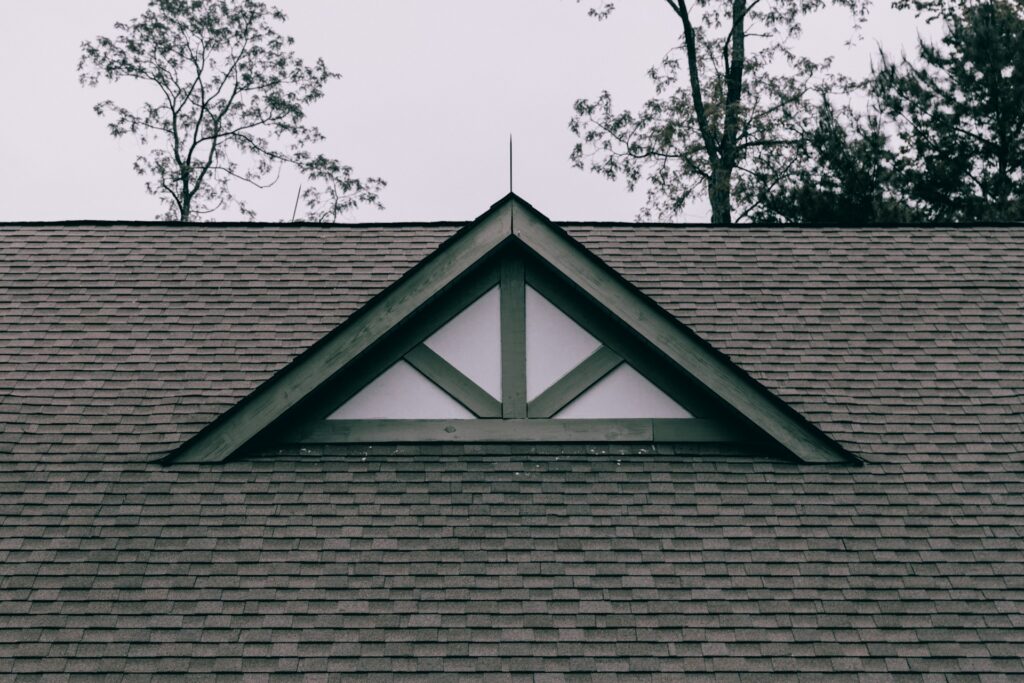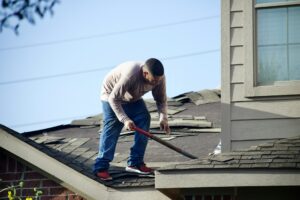A solid roof isn’t just a protection from the outdoors; it’s a vital cornerstone of your home’s structural integrity. Over time, the best roofs will need replacement to ensure reliable protection and long-term peace of mind. Many homeowners wonder when the right moment to replace a roof is and how the process unfolds. This guide covers everything from key signs that indicate you may need a new roof to the materials, costs, and professional installation steps that will safeguard your home for years to come.
Why Roof Replacement Matters
A roof that performs well shields more than just your living space. It preserves the framework of your house, defends your possessions, and adds curb appeal. Delaying or avoiding necessary replacements can lead to water leaks, escalating energy costs, and possible mold growth. By scheduling a replacement before damage becomes extensive, you save money and stress in the long run.
- Prevention over cure: Acting at the first signs of issues helps prevent bigger, more expensive problems.
- Protecting your investment: A new roof enhances your home’s value and appeal to future buyers.
If you’ve been noticing cracked shingles or ceiling discoloration, it may be time to evaluate. Learn more about proper roofing maintenance and inspection schedules through the National Roofing Contractors Association (NRCA) consumer resources.
Signs You May Need a New Roof
Determining whether you need an entirely new roof can be challenging, as issues are often subtle. However, keeping a close eye on the following signs can set you on the right track:
- Curling or Buckling Shingles
Shingles that curl at the edges or buckle in the middle typically indicate they’ve reached the end of their useful life. Harsh sunlight, aging, and repeated freeze-thaw cycles can lead to warped shingles. - Frequent Leaks or Water Stains
One of the most direct indicators is water leaking into your attic or leaving stains on ceilings and walls. If these leaks happen in multiple spots, it’s usually a sign that a patch job alone won’t suffice. - Granule Loss
Asphalt shingles begin shedding granules as they age. Look for granule buildup in your gutters or dark patches on your roof, suggesting that your shingles can no longer withstand the elements. - Excessive Age
Most roofs last 15–30 years, depending on materials and climate. If yours is approaching the 20-year mark, an inspection is strongly recommended. - Sagging Deck
Visually inspect your roofline for drooping. Sagging areas usually result from hidden structural damage, which may necessitate a full replacement.
If any of these red flags appear consistently, your roof may be nearing the end of its lifespan. Consulting a professional roofing contractor, such as HOMEMASTERS, can help you determine whether a complete replacement is the best course of action.
Choosing the Right Materials
Selecting the right roofing material is a balance between budget, climate, aesthetic preferences, and durability. Each material has its own advantages:
Asphalt Shingles
The go-to for many homeowners due to affordability and ease of installation. They come in various styles and colors to match your home’s look. Most asphalt shingles last around 20 years, though premium versions can last beyond 30.
Metal Roofing
Metal roofs can last 40–70 years, providing remarkable durability and energy efficiency. They’re highly resistant to wind, mildew, and insects. Although the initial cost is higher, the long-term savings in energy bills and fewer replacements can make it worthwhile.
Tile or Clay Shingles
Known for a classic, upscale appearance, tile and clay shingles are popular in warmer climates. They can endure for over 50 years but require additional structural support because of their weight.
Wood Shakes or Shingles
Offering a rustic, natural look, they typically last up to 30 years when properly maintained. However, they may require more frequent upkeep and don’t handle fire and moisture as well as some synthetic alternatives.
Synthetic Roofing Materials
Options like synthetic slate or composite shingles provide durability with a lower weight load. They’re molded to mimic the look of natural materials without some of the associated upkeep.
When selecting materials, evaluate how each option performs in your local climate. Some regions demand high UV protection, while others prioritize wind resistance or moisture control. Research local building codes and material requirements through your city’s planning department to ensure code compliance.
The Roof Replacement Process
When you decide to replace your roof, knowing what to expect prevents surprises. Professional roofers usually follow these steps:
1. Initial Inspection and Estimate
A reputable contractor begins with a thorough inspection. They’ll examine the state of your shingles, underlayment, and decks. They also look for signs of moisture infiltration or rot. After the inspection, you receive a detailed estimate that outlines:
- Material costs Labor expenses
- Permits and disposal fees
- Timeline for project completion
HOMEMASTERS and other seasoned professionals typically provide a transparent, itemized breakdown.
2. Obtaining Permits
In many regions, roof replacements call for permits to ensure code compliance. Professional contractors handle these applications, saving you time and reducing the risk of code violations. Permits also help maintain quality and safety standards, ensuring your home is up to local regulations.
3. Removal of Old Roofing
Once logistical details are settled, your contractor will strip away the old materials, exposing the roof decking. This stage may reveal hidden issues like soft decking or inadequate ventilation. Any newly discovered necessary repairs are addressed before adding the new layers.
4. Repair and Preparation
Roof decking, eaves, and vents undergo repair or replacement to ensure a stable foundation. The underlayment is critical here. This layer complements your shingles by adding an extra barrier against moisture, helping seal the surface from unexpected leaks.
5. Installation of New Materials
With the roof prepped, the contractor installs your chosen material, starting from the eaves and working upwards. Proper alignment, cutting, and sealants ensure lasting weatherproofing. Professional installers follow manufacturer guidelines to activate any warranties associated with the product.
6. Cleanup and Final Inspection
The final step involves cleaning up nails, shingles, and other debris from your property. After installation, many contractors use a magnetic tool to pick up stray nails in the yard. A concluding inspection validates that everything has been done according to plan and local building codes.
Cost Factors
Roof replacement costs vary widely. Elements influencing the final price include:
Material Choice
Asphalt shingles remain on the more economical side, while metal or tile tends to be pricier.
Roof Size and Complexity
Larger or more complex roofs with multiple valleys, dormers, or steep slopes command higher labor costs.
Structural Repairs
If rot or water damage is uncovered, additional work may be necessary before laying down new materials.
Regional Labor Rates
Roofing costs vary by region, with labor in urban areas typically higher than in rural locations.
Warranty Coverage
Extended warranties on materials and workmanship can raise project costs. However, an extended warranty can save you money on future repairs.
Remember to request at least three professional estimates to compare. Reputable contractors will provide itemized quotes and welcome any questions you might have, ensuring you feel comfortable with the investment you’re making.
Working With a Professional Roofing Contractor
Transforming old roofing into a brand-new, weather-hardy cover is a complex task. With so much at stake, from your home’s structural integrity to the safety of everyone beneath the roof, partnering with a trusted provider is essential:
Verify Credentials
Look for professional certifications and licenses. A company that is bonded and insured offers you greater financial protection.
Investigate Past Work
Reputable contractors willingly share references or direct you to portfolios of completed projects. Customer reviews on trusted platforms can hint at the team’s reliability.
Get Everything in Writing
Always ensure the contract covers materials, labor costs, schedules, warranties, and payment terms. Written agreements eliminate confusion and protect both parties’ interests.
Communicate Clearly
Build rapport to ensure your contractor listens to your goals, concerns, and design preferences. If you want a particular color or have budget constraints, share these details. Open dialogue fosters a better overall experience.
Selecting a professional who values communication, thoroughness, and high-quality materials lowers the risk of subpar results or unforeseen complications.
Plan Ahead for Minimal Disruption
Roof replacement is a large-scale project that can temporarily disrupt daily life. Plan ahead to keep inconveniences manageable:
- Noise: Expect hammering, equipment movement, and general activity during construction hours.
- Safety Zones: Keep children and pets away from the worksite.
- Personal Schedules: Move vehicles to accessible spots and coordinate errands.
- Seasonal Timing: In many regions, spring or fall offers mild weather for roofing work.
When you know what to expect, the process becomes far less stressful. Many families choose to spend significant parts of the day out of the house during particularly loud construction phases.
Maintaining Your New Roof
Once your roof is in place, routine maintenance helps you maximize its lifespan. Even with durable materials, a proactive approach wards off damage from storms, temperature fluctuations, and debris:
- Regular Inspections
Set up annual checkups, especially after harsh winters or significant weather events. Early detection of minor issues can save major repair costs later. - Keep Gutters Clean
Clear gutters and downspouts enable proper drainage, helping water flow away from the roof instead of back up under the shingles. - Remove Debris
Leaves, branches, and other debris can trap moisture, fostering mold or rot. A quick sweep now and again ensures a healthy roof surface. - Trim Overhanging Trees
Branches brushing against your roof can scrape away protective granules or loosen shingles, especially in windy conditions. - Address Issues Promptly
If you notice missing shingles or minor leaks, call a professional. Timely repairs extend your roof’s lifespan and reduce overall costs.
Check out the HOMEMASTERS blog for additional home maintenance advice, including tips on gutter upkeep and storm damage inspection.
Common Roof Replacement Myths
Misinformation exists about how, when, and why to replace a roof. Let’s debunk some common myths:
Myth: A Repair Is Always Cheaper Than a Replacement
In some cases, repeated repairs add up to cost more than simply installing a new roof. Constant leaks in multiple areas can become expensive over time.
Myth: You Can Lay New Shingles Over Old Ones
While it’s tempting to save on disposal fees, layering can compromise ventilation and hide structural problems. Most building codes allow only up to two layers, if at all, but a full tear-off often yields better long-term results.
Myth: Summer Is the Only Time for Roofing
With modern tools and skilled crews, roof replacement is possible in many weather conditions. Mild seasons often reduce scheduling delays, but an experienced contractor can manage cooler or even lightly rainy conditions with proper planning.
Myth: Metal Roofs Attract Lightning
Metal roofing does not increase your likelihood of a lightning strike. In fact, should lightning occur, metal typically handles the electrical current by safely dispersing it, reducing fire risk relative to other materials.
Transform Your Home With a Quality Roof
Replacing a roof can transform your home from the top down. Beyond the aesthetic value, a properly installed roof maintains efficient heating and cooling. You’ll worry less about water infiltration or storm damage, knowing your investment is protected for the long term. This peace of mind is priceless, letting you focus on living comfortably and confidently in your home.
A new roof also works wonders for resale potential. Prospective buyers recognize the value of recent renovations, often resulting in higher offers and quicker sales. If you’re not planning to move, you still enjoy the intangible benefits of a safer and more beautiful home.
Final Thoughts
Roof replacement is a substantial project that can feel overwhelming. Yet, with the right education and guidance, it becomes an opportunity to safeguard, enhance, and add lasting value to your home. From spotting early signs of damage to selecting materials that suit your style and climate, proactive steps speed your path toward a roof that’s both reliable and visually appealing.
When you align with an experienced contractor who values transparency and quality workmanship, your roof transitions from a potential liability to a long-term asset. Whether you decide on asphalt shingles, classic tiles, or modern metal roofing, the end result is a home fortified against the elements. In that sense, a new roof is much more than a structural necessity, it’s a fundamental building block that secures your comfort and investment.Consider scheduling a professional roof inspection if you haven’t done so recently. With knowledge in hand, you can confidently decide whether a roof replacement now is the strategic move you and your home deserve.




